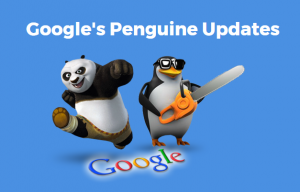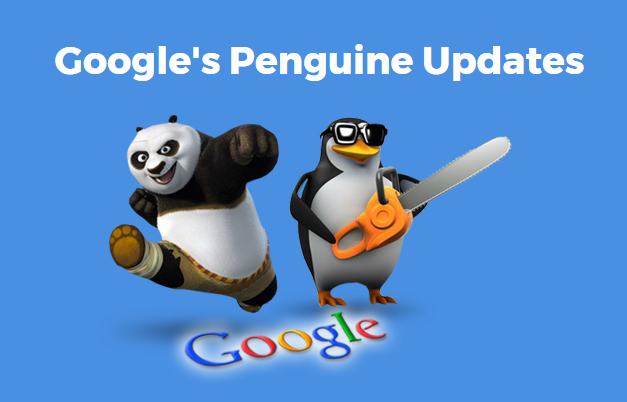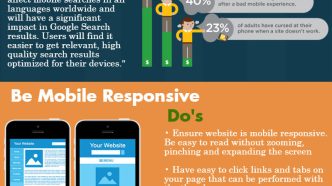
If you are into SEO for a couple of years, then you may have noticed that every year Google rolls out the update and changes its search algorithm around 500–600 times roughly. While most of these updates are minor, but some of them are “major” algorithmic update (such as Google Panda, Google Pigeon, Google Possum and Google Penguin) that shook the entire SEO industry as well as SEO pundits by leaps and bounds and affected search engine results in significant ways.
After a nearly two year wait, Google once again updated its Penguin algorithm. This is the fourth major release update, making it Penguin 4.0. Now, this is the last release of this type, since Google officially announced that Penguin is a real-time signal processed within its core search algorithm. Before that, in April 2012, Google launched Penguin 1.0, which was the biggest algorithm change. It attacked the sites that featured low-quality backlinks, questionable link profiles, and anchor text that was overly optimized or to keyword-rich for a single term. Then, on 22 May 2013, Google officially rolled out Penguin 2.0 algorithm update. The last algorithm update which Google rolled out on October 17, 2014, was Penguin 3.0. Those websites which were affected by this algorithm update nearly waited for around two years for the chance to get free. Although, the last algorithm update rolled out by Google may have affected less than 1% of US/UK searches, but that eventually lead to more than 12 billion queries.
Now, we have Penguin 4.0. With this algorithm update, Google is targeting those sites which fall under the category of “web spamming”. This includes keyword stuffing, sites using black-hat techniques, over-optimized SEO sites, and sites using link schemes to build backlinks.
Here’s Google’s official announcement post:
Enlisted below Are the Reasons Why Your Website Might Be Affected by Penguin 4.0 algorithm Update:
- SEO over-optimization
- Affiliate websites with thin content and no value
- Link pyramid
- Anchor text over-optimization
- Low-quality backlinks
- Keyword stuffing (high keyword density around 8-10%, repeating same keywords)
- Link relevance
- Outbound link quality
- Serving duplicate content from sub-domain
- Sending automated queries to Google
- Websites with the virus or spam warnings
- Hidden links and hidden texts (Black-hat SEO practice)
- Any other black-hat SEO techniques
Ways To Recover From Penguin 4.0 Algorithm Update
Link Quality: If you’ve availed the services like 5000 backlinks for $5, most probably your website get penalized (if not today, then in the future definitely). The best way to avoid penalization is get rid of such low-quality backlinks and get high-quality links to balance a good ratio of good to bad links.
Google Webmaster Tool Is Your Best Friend: We all know that Google Webmaster is an official product from Google that helps in analyzing the website’s SEO in detail. Even Google lately started sending emails to Webmaster Tool users if there is an issue or a website starts dropping traffic. By and large, we can say that Google webmaster tool is your best friend.
Keyword Density: If you practice keyword stuffing strategy to rank higher, then you should stop doing it immediately otherwise your website will get penalized. Instead, use LSI (latent semantic indexing) words. It is considered wise to maintain the keyword density of 1.5% max and choose long-tail keywords to rank easily because there is less competition for long-tail keywords. If any of your previous posts is stuffed with keywords, you should re-edit your post. Always try to maintain a good keyword density along with LSI words.
Write Not Just For Search Engines, But For Users As Well and Try to Solve Their Queries
If you write content only for search engines to rank higher in the search engine result pages (SERPs), soon your website will be penalized. Try to stop pushing low-quality content, otherwise, you might be the next victim. Instead, you can work on improving the quality of your blog posts and make them well-informative. Use short paragraphs, heading tags (H1, H2, H3) and bullet points to make your content presentable.
Stop Using SEO Automation Right Away: No doubt, automated SEO is bad for your website and can cost you an arm and a leg. If you’re using some automated ways (ex: “WebPosition Gold”) to optimize your website, you should stop doing it immediately. Because, by doing this, you are violating Google’s Terms of Services and such unethical practices should be stopped immediately.
From this, we can conclude that SEO is not dead, and Google doesn’t hate SEO at all. All you need to do is follow white-hat SEO techniques to improve the presence of your website and ranking on the major search engines. Do not overdo the SEO or over-optimize your website. Keep things natural by following the standard guidelines suggested by Google and the SEO community.
Thanks for reading! Liked what you just read, share it ahead with your friends and colleagues.



